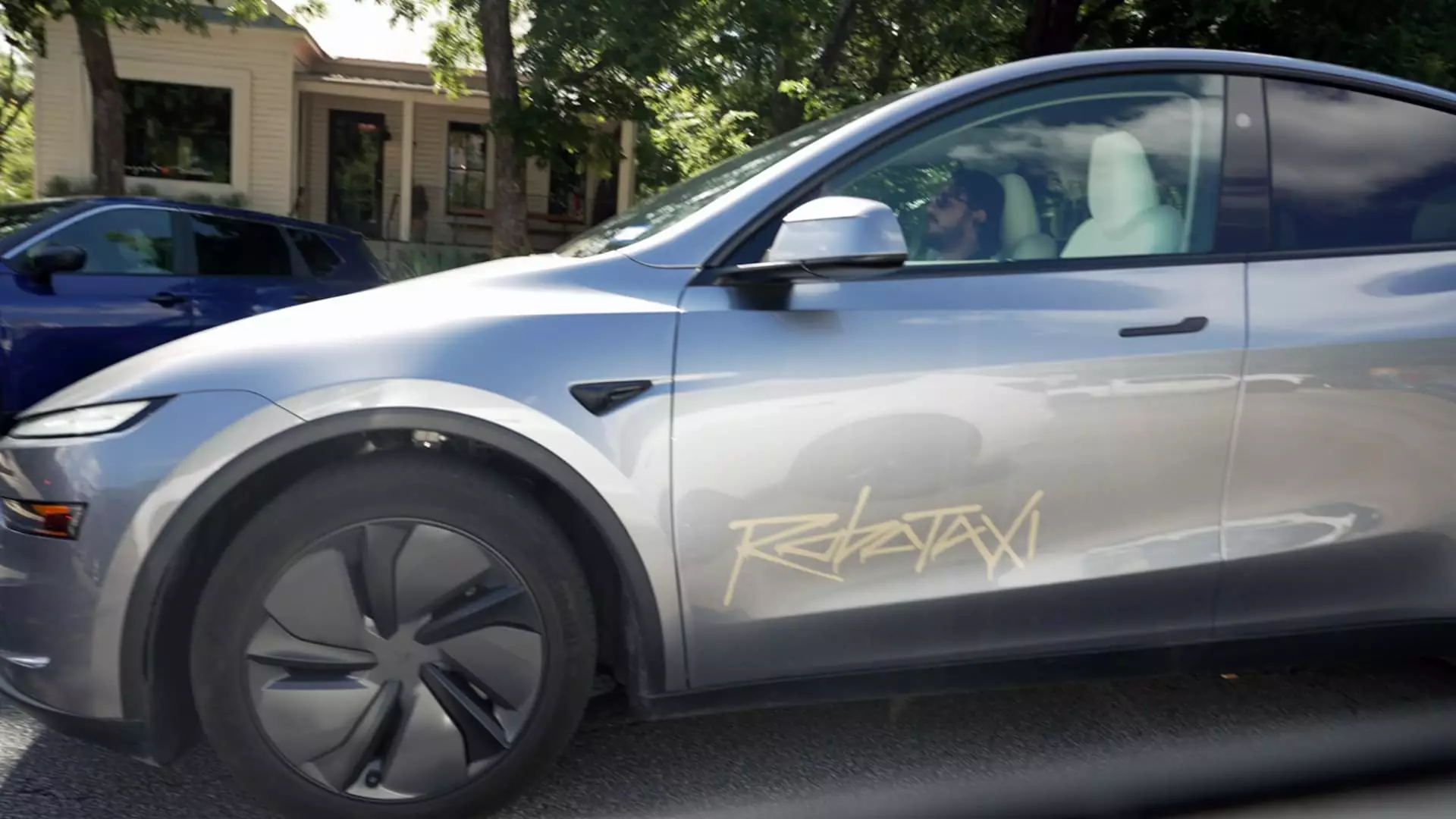Tesla’s relentless pursuit of autonomous driving, especially through its Robotaxi initiative, raises more doubts than excitement among skeptics and industry insiders alike. Despite Elon Musk’s grandiose claims, Tesla’s approach—relying primarily on cameras and vision-based systems—appears fundamentally flawed when scrutinized against the progress made by more technologically comprehensive competitors like Waymo. Musk’s insistence on a “vision-only” philosophy disregards the complexities of real-world driving, where multimodal sensor fusion has repeatedly proven to be far more reliable and safe. For years, Tesla has painted a picture of technological inevitability, but recent incidents—ranging from minor collisions to regulatory investigations—highlight that the company is still far from the autonomous utopia it envisions.
Rather than a breakthrough, Tesla’s robotaxis seem closer to a cautious gamble, with actual deployment riddled with questions of safety and consistency. The incident caught on camera near a restaurant in Austin, where a Tesla Robotaxi dinged a parked car, isn’t an isolated anomaly but a symptom of systemic issues. Such occurrences—publicized and amplified on social media—undermine Tesla’s narrative of technological supremacy. If a company with musk’s resources cannot prevent everyday mishaps, it prompts a critical question: Are Tesla’s robotaxis ready to operate unsupervised among human drivers and pedestrians? Risking passenger safety for technological bragging rights remains an ethically questionable stance that could set back the public’s trust in autonomous systems.
Regulatory Hurdles and Public Disillusionment
Tesla’s slow and often opaque application process in jurisdictions like California, combined with regulatory scrutiny, exposes a deeper tension between innovation and safety. The Nevada of autonomous vehicle regulations—no pun intended—lacks a clear pathway for Tesla to secure the approvals needed for fully driverless testing and deployment. Meanwhile, competitors like Waymo have been more upfront, gradually expanding their fleets and working closely with regulators, earning public trust and government confidence along the way.
Tesla’s approach seems characterized by a desire to accelerate beyond safety validation, perhaps driven more by market hype than by evidence-based readiness. The California lawsuit accusing Tesla of false advertising about self-driving capabilities further compounds these doubts. It’s difficult not to see these regulatory and legal challenges as signs of a company overestimating its technology, or at least prioritizing marketing over safety. For a company that has made lofty promises, the disconnect between Musk’s claims and the tangible results raises serious questions about its long-term credibility and responsibility.
The Myth of Cost-Effectiveness and Future Promise
Proponents argue that Tesla’s reliance on cameras and AI—avoiding the costly lidar sensors—makes its autonomous vehicles more economically viable. But claims of cost savings and technological superiority are increasingly suspect when set against operational realities. The extensive testing in Austin, while publicly heralded, paints a picture of a nascent technology still prone to errors and setbacks. These incidents, often captured on social media, contribute to public skepticism and regulatory hesitation. They suggest that Tesla’s vision of a fleet of fully autonomous Robotaxis—affordable, safe, and ubiquitous—is not only premature but borders on fantasy.
Meanwhile, competitors like Waymo, with their multi-sensor approach, are gradually gaining ground and public trust, demonstrating that safety and reliability are paramount. Tesla’s stubborn refusal to embrace hybrid sensor solutions might turn out to be its Achilles’ heel. The ongoing delays and setbacks highlight a fundamental misunderstanding: technological leaps are contingent on rigorous validation, not just bold proclamations.
Tesla’s push into robotaxi services embodies the audacity—and ultimately the hubris—of a company eager to dominate without fully grappling with the realities of safe autonomous driving. The company’s claims often outpace verifiable results, fueling disillusionment and skepticism among regulators, consumers, and industry experts. While electrification and innovation are vital for a sustainable future, it’s crucial that advancements in autonomy prioritize safety over sensationalism. Elon Musk’s Tesla may still have a long way to go before its Robotaxi vision becomes a trustworthy reality; until then, the promise remains more illusion than substance.



Leave a Reply